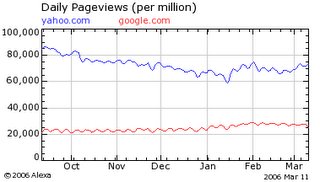There are many virtues to a paper-free life. For those of us living in small Manhattan apartments, the space saved by eliminating paper files was enough, by itself, to motivate my transition to committed scanner.
Remote access is a second virtue that I really enjoy. I have configured my home network to make it easy for me to log on to any of my home PCs from virtually any internet-connected computer. (Eventually, I intend to post more on this to solicit comments on the 'hackability' of my home network. For now, I'll continue to pretend that security through obscurity actually works.)
There is a third benefit of paper-free living that I have been hoping to realize for months, but only last week did it finally become a reality. With all my important home/personal records on paper, a house fire or flood would have been disastrous. With everything stored digitally, I thought it would be trivial to keep an off-site copy of everything. After investigating a number of alternatives, I couldn't find a cheap and reliable way to maintain a backup.
I thought about copying my files onto DVDs, but the manual process is much too laborious. I thought about copying them to my laptop, but I have more than 50 gigabytes of data to backup, and my laptop hard disk doesn't have sufficient capacity. There are dozens of online backup services but none offers what I want:
- At least 100 gigabytes of online storage with the potential to add more as my document library grows.
- A large, profitable company standing behind the online service (or some type of distributed infrastructure that does not depend on the balance sheet of a small company)
- A way to encrypt my files, before they leave my desktop, so I can rest assured that my sensitive records will never be read by anyone else.
- For $25, buy Syncback from a small publisher called 2 Bright Sparks. The product is cheap but fabulous. It is infinitely configurable to back files up from one location to another. The destination can be another local disk or directory or it can be a remote FTP server. You can schedule and group backups with dozens of options including on-the-fly encryption of files into 256-bit AES encrypted ZIP archives.
- For $4.99 a month, get a Home Hosting package from 1and1 Internet. It comes with two free domain name registrations, 100 GB of online disk space accessible via FTP with 1 TB of monthly bandwidth. It also includes some free email accounts.
The only gotcha was the time it took to complete the first backup. My roughly 50GB of data required 22,000 minutes (that's almost 16 days!) for the initial synchronization. Of course from now on, it's just the incremental changes that get copied, so it will be a lot faster. It was a very painful reminder that cable broadband isn't really broadband in the upload direction.
Now if one of my neighbors drops a lit cigarette into the trash and sets my building on fire, I can focus on getting my family to safety without having to grab a hard drive while rushing to the fire escape.









